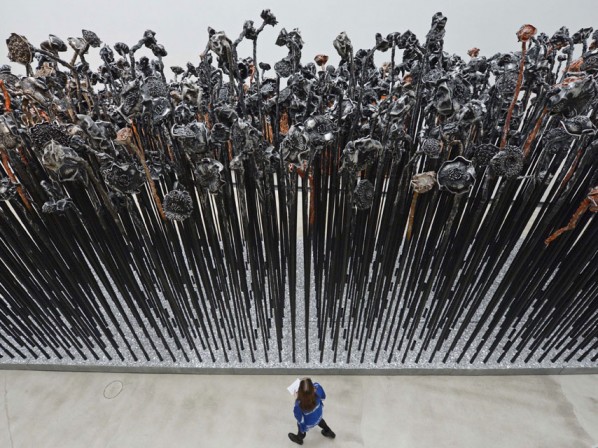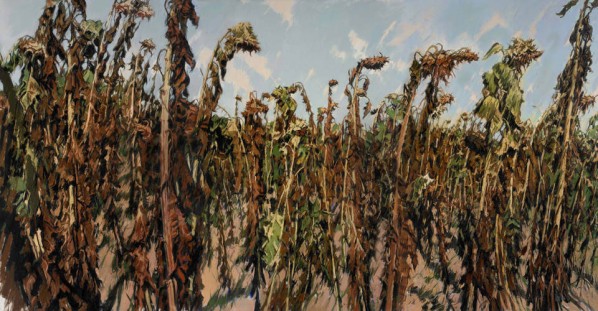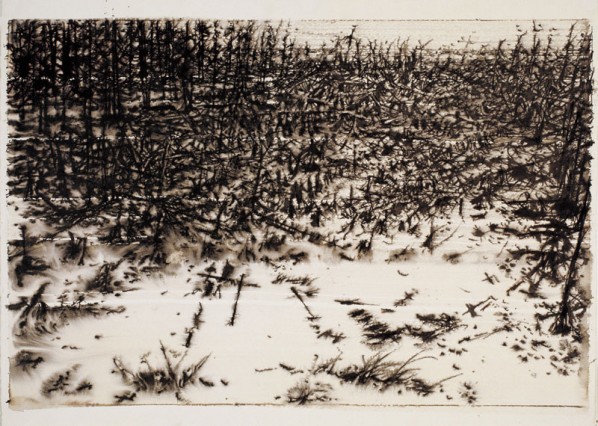
A woman walks in front of the sculpture 'Living together' (2012)in the exhibition 'Re-Generation'. AP Photo/Jens Meyer.
The exhibition has been jointly developed by the Staatliche Kunstsammlungen Dresden, the National Art Museum of China and the China Academy of Art Hangzhou. With more than 150 paintings and works on paper as well as two monumental sculptures, the exhibition is Xu Jiang’s first large retrospective in Germany and is an integral part of the Chinese Year of Culture 2012. The exhibition starts on May 17, 2011 and lasts until Aug. 18, 2012.
Sunflowers, those plants which adjust themselves towards the sun, form the central subject of the exhibition. In the eyes of the artist, they have become symbolic of an entire generation, the generation that grew up after the great wars of the 20th century and the Cultural Revolution. During this time, not only the Chinese history but also individual biographies were subject to unrelenting change.

Xu Jiang, Sunflowers, 2008; Oil on Canvas, 280x540 cm

Xu Jiang, Depth of Winter III., 2005; Water color, 58x78x27 cm
Xu Jiang’s ‘sunflower generation’ has been shaped by the task of coming to terms with the country’s historical upheaval, by a disengagement from the past and by the necessity of finding new orientation. Through his exhibition, the artist fosters a dialogue about how to redefine artistic positions in the wake of historical events. In a dialogue between artists and visitors, he seeks to explore the spiritual core of a shared history which is rooted in similar social and artistic experiences.

Xu Jiang Stands before his work 'Sunflowers without ground' (2010). AP Photo/Jens Meyer.
Xu Jiang was born in Fujian, China, in 1955. He is principal and professor at the China Academy of Art in Hangzhou. He deals in great depth with the cultural context in which he creates his works. At the same time, his works are about the exchange between Western and Eastern cultures. His painting is regarded as an opposition to contemporary visual and consumer culture, a new development in the Chinese art discourse in the digital age.
As director of the China Academy of Art, Hangzhou, Xu Jiang has profoundly shaped and reformed the conception of art studies in China with his innovative ideas. Through his work he establishes creative free spaces for experimental art and open debates.




























